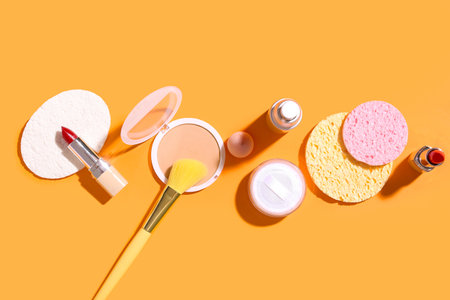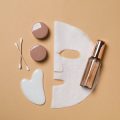1. Why Patch Testing Is Essential for Brits
If you’re living in the UK, you’ll know that our famously unpredictable weather can be a real challenge for your skin. One minute it’s pouring with rain, the next we’re battling a brisk wind or surprise sunshine—no wonder our complexions can feel a bit sensitive! That’s why patch testing new skincare products isn’t just a good idea; it’s absolutely essential for Brits. With sensitivities and allergies on the rise across the UK, especially due to environmental factors like pollution and constant weather changes, taking the time to patch test ensures you don’t end up with redness, irritation, or an unexpected reaction. Whether you’ve got classic British fair skin that flushes easily or a complexion that’s seen its share of city grime, a simple patch test gives you peace of mind before diving into a new routine. Think of it as your skincare insurance policy—a quick step now to avoid discomfort later.
2. How to Choose the Right Spot for Your Patch Test
When it comes to patch testing new skincare products, selecting the correct area on your skin is crucial for getting reliable results—especially with Britain’s ever-changing weather and busy lifestyles. For the most accurate results, choose areas that are discreet yet sensitive enough to reflect how your skin will react in daily use.
Top Areas for Patch Testing
| Test Area | Why It Works | British Lifestyle Consideration |
|---|---|---|
| Behind the Ear | This spot is hidden and has delicate skin similar to your face. It’s perfect if you want to keep any reactions out of sight, especially important before work or social events. | Great for those commuting on the Tube or working in an office—no one will notice a thing! |
| Inside the Elbow (Inner Arm) | The skin here is thin and sensitive, making it ideal for spotting any irritation quickly. | If you’re often outdoors or wearing jumpers, this area stays covered, so any redness remains private. |
| Wrist | Easy to access and check throughout the day, especially handy if you’re constantly on-the-go. | Perfect for those who need a quick glance while running errands or at the gym. |
Tips for Busy Brits
- Choose a spot that won’t be rubbed by clothing or accessories, especially with unpredictable UK weather where layers come on and off frequently.
- Avoid hands or face for initial tests, as these are exposed to more environmental factors and frequent washing—common with Britain’s love of tea breaks!
- If you cycle or walk a lot, opt for behind the ear or inside the elbow to avoid friction from backpacks or coats.
Selecting the right area isn’t just about science—it’s also about fitting patch testing seamlessly into your British routine. By picking discreet spots like behind your ear or inside your elbow, you’ll get trustworthy results without interrupting your everyday life.

3. Preparing for Your Patch Test
Getting ready for your patch test is just as crucial as the test itself, especially with Britain’s unique climate and daily routines. Here’s a step-by-step guide to ensure your skin is prepped perfectly:
Step 1: Choose the Right Time
Avoid testing after a long day in the city or after being caught in London’s infamous drizzle—your skin could be more sensitive or slightly dirty. Aim for a calm evening, ideally when you haven’t been exposed to pollution, heavy winds, or rain.
Step 2: Cleanse Your Skin Thoroughly
Wash the area you’ll use for the patch test (commonly your inner forearm or behind your ear) with a gentle, fragrance-free cleanser. Use lukewarm water—nothing too hot or cold—to prevent irritation. Pat dry with a clean towel.
What to Avoid
- No exfoliators or active treatments (like retinol or acids) on test areas for at least 24 hours before patch testing.
- Don’t apply moisturiser, perfume, or other products to the area just before testing; your skin should be bare and neutral.
- If you’ve been sweating heavily (perhaps after a jog through Hyde Park), wait until your skin has cooled and normalised.
Step 3: Gather Your Tools
Have cotton buds, plasters (plasters are what we Brits call ‘band-aids’), and the new skincare product ready. Make sure your hands are freshly washed before starting.
Pro Tip for Brits
If you’re prone to allergies due to the UK’s pollen-rich seasons, consider waiting until symptoms have calmed down before patch testing to avoid confusing reactions.
4. How to Apply and Monitor the Product
Detailed Application Tips for Patch Testing
When patch testing a new skincare product, precision and patience are key. Here’s a step-by-step approach specifically tailored for Brits:
Step-by-Step Guide:
| Step | Action | Tips for Brits |
|---|---|---|
| 1. Choose the Area | Select a discreet spot, such as behind your ear or inside your forearm. | The inner forearm is popular in the UK due to frequent sleeve-wearing, making it easy to conceal reactions. |
| 2. Cleanse the Skin | Wash the area with mild, unscented soap and pat dry. | Avoid heavily fragranced soaps common in British high street shops, as they may mask reactions. |
| 3. Apply a Small Amount | Dab a pea-sized amount of the product onto the test area using clean fingers or a cotton bud. | This minimises waste and ensures even coverage, ideal for pricier UK skincare brands. |
| 4. Wait and Observe | Leave the product on for 24 hours without washing it off unless irritation occurs. | The unpredictable British weather (rain, humidity) can affect skin sensitivity—consider covering the patch if venturing outdoors. |
| 5. Monitor Reactions | Check for redness, swelling, itching, blistering, or rash during and after 24 hours. | Central heating during colder months can make skin drier and more reactive; watch closely in winter. |
British-Specific Irritants to Watch For:
- Pollen & Pollution: Urban areas like London can expose skin to higher pollution levels, increasing irritation risk during patch tests.
- Hard Water: Common in many parts of the UK, hard water may aggravate sensitive skin when rinsing before application.
- Synthetic Fragrances: Popular in some British drugstore products—these can trigger allergic reactions more frequently than natural alternatives.
- Mould Spores: Damp British homes can contribute to underlying sensitivities; be extra vigilant if you notice any unusual reactions at home.
When to Remove Immediately:
If you experience intense burning, stinging, or severe redness within minutes of application, wash off the product straight away with cool water and seek medical advice if needed. Better safe than sorry!
5. What Reactions to Look Out For
When patch testing new skincare products, its important to distinguish between the typical reactions and those that should raise a red flag. Mild redness, a slight tingling sensation, or a bit of dryness are fairly common—especially in the UK, where our skin often contends with chilly winds and central heating. These minor symptoms usually settle within an hour or two and aren’t cause for alarm. However, you should be on the lookout for more pronounced reactions.
Signs of Concern: When to Take Action
If you notice intense redness, persistent itching, noticeable swelling, blistering, or burning, these could indicate an allergic reaction rather than just British dry skin acting up. Such symptoms may appear within minutes or several hours after application.
How to Tell It’s More Than Dry Skin
Unlike everyday dryness—which might make your skin feel tight or slightly flaky—an allergic reaction is often accompanied by warmth, visible hives, or even a rash that spreads beyond the test area.
What To Do If You React Badly
If any of these concerning symptoms occur, gently wash the area with cool water and avoid further use of the product. Seek advice from your pharmacist or GP if symptoms persist or worsen. Remember: patch testing helps you spot problems early, so always err on the side of caution before introducing something new into your British skincare routine.
6. What to Do If You React
So, you’ve followed all the patch test steps, but unfortunately, you’re seeing some redness, itching, or bumps on your skin. Don’t panic—this is exactly why we patch test! Here’s an action plan tailored for UK skincare lovers:
Step 1: Stop Using the Product Immediately
If you notice any irritation, gently cleanse the affected area with lukewarm water and a mild, fragrance-free cleanser. Avoid using any other products on that spot for at least 24 hours.
Step 2: Soothe Your Skin
Apply a cool compress or an unscented moisturiser to calm the reaction. Steer clear of actives like retinol or exfoliating acids until your skin has completely settled down.
When Should You Seek Help?
If the irritation is severe—think swelling, blistering, or intense itching—it’s best to consult your local pharmacist for advice. Pharmacists across the UK are well-versed in common skincare reactions and can recommend over-the-counter remedies or let you know if you need something stronger.
Contact Your GP If:
- The reaction covers a large area of your body
- You experience difficulty breathing or swallowing (which could indicate a serious allergy)
- The irritation persists for more than a week despite gentle care
Remember, everyone’s skin is different and even products labelled “hypoallergenic” can sometimes cause problems. By following these steps and knowing when to seek professional help, you’ll keep your skin safe while exploring new favourites in your routine—the British way!


